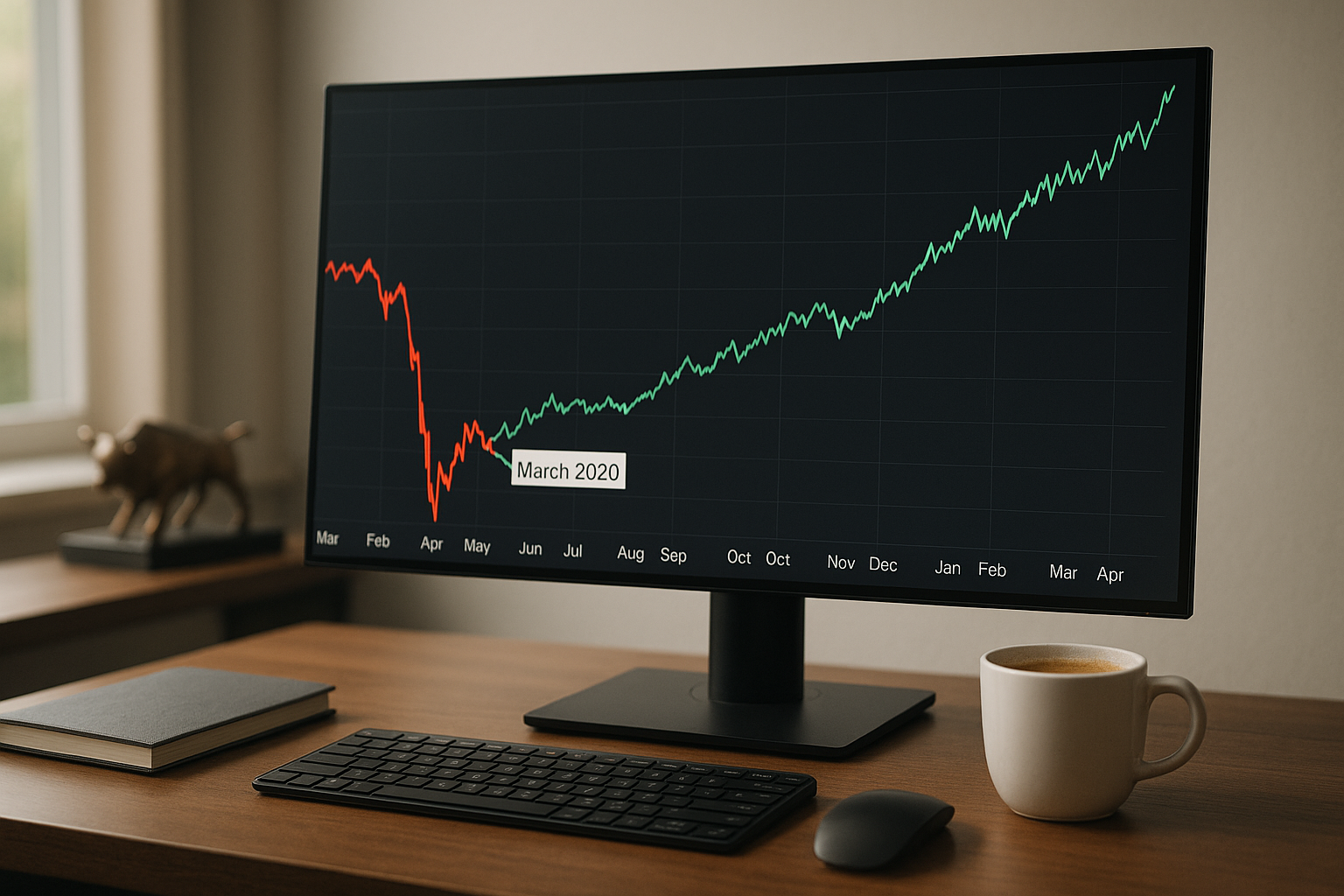Remember March 2020? Wall Street was in freefall. The S&P 500 nosedived almost 35% in weeks. We all watched in horror, wondering if this was the end of capitalism as we knew it.
Fast forward four years. Not only has the market recovered, it's strutting around like it owns the place. The S&P has roughly doubled from pre-pandemic highs.
Doubled. Let that sink in for a moment.
This isn't just your garden-variety bull market. It's something else entirely — something that makes you wonder what's really going on beneath the surface. Are we witnessing an economic renaissance of historic proportions, or just watching a high-stakes game of financial musical chairs?
The inflation argument is the first refuge of market skeptics. "Well, duh," they say. "Everything costs more now!" Fair point. We've seen about 20% cumulative inflation since January 2020. But that explains only a fraction of the market's performance. If stocks were merely keeping pace with inflation, we'd see maybe a 20% bump — not a 100% explosion.
Here's where things get interesting. The market's P/E ratio — that classic valuation yardstick — isn't actually in the stratosphere. It's around 28 right now. High? Sure. Dot-com bubble territory? Not even close. (Those were the days when P/E ratios soared past 40, and analysts somehow kept straight faces while justifying them.)
So what's going on? How has the market doubled without valuations going completely bananas?
Several forces are at work simultaneously.
First off, corporate earnings have genuinely grown — and substantially. American businesses didn't just weather COVID; many thrived during it. The initial economic shock gave way to unprecedented government stimulus, which flowed straight into corporate coffers as homebound consumers spent like sailors on shore leave.
Then there's the dramatic shift in what actually constitutes "the market" these days. The tech giants — you know the ones — now make up an enormous chunk of major indices. These aren't your grandfather's blue chips. They operate with fundamentally different economics: higher margins, less capital intensity, and business models that scale in ways that make old-school industrials look positively quaint.
And perhaps most crucially (though least sexy to discuss at parties), the discount rate used to value future earnings has fundamentally changed. Despite recent Fed hawkishness, interest rates remain historically low. When the risk-free rate drops, future earnings become more valuable in today's terms. It's financial wizardry that makes everything look bigger, like those mirrors in fitting rooms that somehow make you look taller and slimmer. (Okay, bad example — those actually make me look worse, but you get the point.)
I've covered market cycles since the early 2000s, and I keep coming back to what I call the "Expectation Normalization Cycle." During crises, we humans tend to catastrophize, recalibrating our expectations downward — often excessively. When reality proves less apocalyptic than our fears, markets don't just correct — they overshoot as relief and optimism create a potent cocktail of irrational exuberance.
We're probably in the later stages of that cycle now.
Look, there's also something happening with what constitutes "normal" in younger investors' minds. A whole generation has never lived through a sustained bear market or high inflation environment. To them, assets only go up (with occasional "buying opportunities"), central banks always provide a safety net, and traditional valuation metrics are as relevant as rotary phones.
I'm not saying this ends badly. Maybe it doesn't! Perhaps we've genuinely entered a new economic paradigm where tech giants with virtually zero marginal costs deserve valuations that would make Benjamin Graham spin in his grave. The pandemic accelerated digital transformation by years — possibly creating lasting value that forward-looking markets are correctly pricing in.
But history... well, history suggests caution.
When the market doubles in four years while the broader economy grows at a fraction of that pace, something's gotta give. Either economic growth needs to accelerate dramatically to justify current valuations, or asset prices may need to reconnect with economic reality.
The wisest approach? Acknowledge both possibilities without becoming married to either. Markets can remain "overvalued" by traditional standards for years, even decades. Or they could suddenly decide that old-school metrics matter after all.
Either way, it's worth occasionally stepping back to marvel at where we are. A once-in-a-century pandemic, the steepest economic contraction in modern history, political turmoil not seen in generations — and yet here we stand, markets at all-time highs, doubled from levels that already had serious people raising eyebrows.
Which is, you know, totally normal and not at all concerning.
Right?
